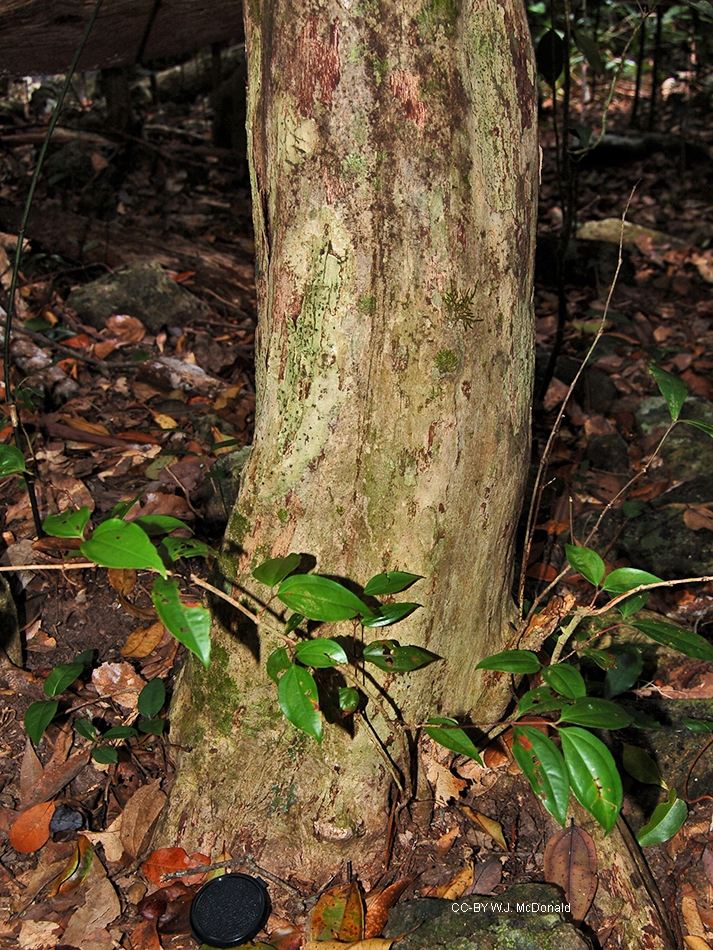Australian Tropical Rainforest Plants - Online edition
Rhodamnia glabrescens Guymer & Jessup

Guymer, G. & Jessup, L.W. (1986), New species of Rhodamnia Jack (Myrtaceae) from Australia. Austrobaileya 2(3): 231. Type: "State Forest 67 Bulburin, 23 May 1985, N. Gibson 733 (holotypus BRI, isotypus BRI)."
Erect shrubs, or small trees 2-5 m high; bark flaky or papery, brown, gray, or reddish. Young stems hairy, becoming hairless.
Leaves simple, opposite, rarely sub-opposite. New growth often pinkish. Stipules two to several, linear, 0.2-0.3 mm long, reddish. Petiole 3-7 mm long, sparsely hairy, brown or reddish, ± channelled above. Leaf blade narrowly ovate to ovate or oblong elliptic, 3.5-9.5 (-10.7) cm long, 2.1-5.2 cm wide, base cuneate to rounded, margins entire, apex acuminate. Leaf 3-veined with two prominent lateral veins arising from the base of the lamina and extending to apex, lateral veins numerous, distinct, intramarginal veins present, distinct or indistinct and very close to leaf margin. Domatia sometimes present as pockets in angles of lateral veins and midrib. Upper surface dull, hairless or sparsely hairy, lower surface sparsely hairy or glabrous. Oil glands present, visible with hand lens sparse to occasional.
Inflorescences axillary, solitary, paired or in cymes. Flowers bisexual, actinomorphic, 4-merous. Hypanthium 2-2.5 mm long, sparsely hairy. Sepals more or less free to hypanthium, fused only at base, 2-3.2 mm long, broadly triangular or ovate, green or tinged red, glabrous, fimbriate on margins. Petals free, 5-5.2 mm long, spreading, obovate, widely obovate or oblate, glabrous but fimbriate on margins, white or pinkish or yellowish. Stamens numerous (c. 60-85). Ovary inferior, shortly hairy, 1-locular; style 3.5-5.5 mm long, sparsely hairy.
Fruit fleshy, a berry, subglobose, globose or depressed-globose, (4-) 8-12 mm long, (4-) 7-11 mm in diam., red to nearly black at maturity, sepals persistent in fruit. Seeds 2-4, 3-4.5 mm long, subglobose to globose, with a hard outer layer, yellow or light brown.
Features not available.
Occurs in CEQ from a few populations near Mt Dryander NE of Proserpine. Also occurs in south eastern Queensland south of Gladstone, near Miriam Vale and Mt Boogooramunya. Recorded as occasional to common in notophyll vine forests of various types and dry rainforests.
This profile information and associated coding has been adapted from Guymer & Jessup (1986), Harden et al. (2014), Snow (2007) and Wilson (2011).





